
Logos Ciencia & Tecnologia
Scope & Guideline
Bridging disciplines to innovate in criminology and technology.
Introduction
Aims and Scopes
- Interdisciplinary Research on Security:
Focuses on the intersection of security, law enforcement, and societal issues, providing insights into the dynamics of crime prevention, police ethics, and community safety. - Technological Innovations and Methodologies:
Explores the application of technology in security practices, including the use of data analytics, digital tools, and innovative policing strategies. - Socioeconomic and Cultural Analyses:
Investigates the influence of social, economic, and cultural factors on crime rates, public safety, and community interactions, particularly in the Latin American context. - Public Health and Safety:
Addresses the implications of public health issues, including the impact of pandemics on crime and policing, as well as the mental health of law enforcement personnel. - Environmental and Ecological Considerations:
Examines the role of environmental factors in security and community resilience, including studies on socio-environmental conflicts and ecological impacts.
Trending and Emerging
- Cybersecurity and Digital Policing:
A growing focus on cybersecurity strategies within law enforcement, including the incorporation of gamification and innovative digital solutions to combat cyber threats. - Impact of Socioeconomic Factors on Crime:
Increased research on how socioeconomic conditions influence crime rates and public safety, reflecting a more nuanced understanding of the root causes of criminal behavior. - Public Health and Safety Integration:
Emerging themes linking public health issues, such as the COVID-19 pandemic, with security practices, emphasizing the need for integrated approaches to health and safety in policing. - Community and Citizen Engagement in Security:
Research emphasizing the role of community participation and citizen involvement in shaping security policies and practices, highlighting a shift towards collaborative approaches. - Environmental Security and Sustainability:
An increase in studies focusing on environmental issues related to security, including the impacts of pollution and ecological degradation on community safety and resilience.
Declining or Waning
- Traditional Criminal Justice Approaches:
There has been a decline in publications focused solely on conventional criminal justice methods, suggesting a shift towards more innovative and interdisciplinary approaches to security and policing. - Generalized Studies on Crime without Specific Context:
Research that lacks specific regional or contextual analysis is becoming less prominent, indicating a preference for localized studies that provide deeper insights into particular issues. - Basic Theoretical Frameworks without Empirical Evidence:
The journal seems to be moving away from purely theoretical discussions that do not incorporate empirical data or case studies, favoring research that demonstrates practical applications and real-world implications.
Similar Journals
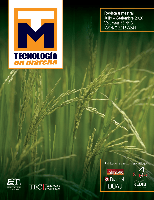
Tecnologia en Marcha
Pioneering Research for a Sustainable FutureTecnologia en Marcha is a premier academic journal published by the Instituto Tecnológico de Costa Rica, catering to the fields of engineering, technology, and applied sciences. With its open access model established since 1999, the journal ensures that cutting-edge research is readily accessible to scholars and practitioners alike, promoting innovation and collaboration across various domains. ISSN: 0379-3982 and E-ISSN: 2215-3241 exemplify its commitment to global dissemination of knowledge. The journal aims to publish high-quality empirical and theoretical studies that contribute to technological advancements and educational practices, fostering an environment where interdisciplinary research can flourish. By providing a platform for researchers, professionals, and students from diverse backgrounds, Tecnologia en Marcha plays a vital role in shaping the future of technology and engineering in Latin America and beyond.
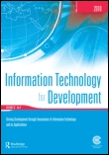
Information Technology for Development
Unlocking Potential Through Technological InsightInformation Technology for Development is a leading academic journal dedicated to advancing the understanding and application of information technology in the context of development challenges across the globe. Published by Routledge Journals, Taylor & Francis Ltd, this peer-reviewed journal has earned a prestigious Q1 ranking in multiple related fields, including Computer Science Applications, Development, E-learning, and Public Administration as of 2023. With an impact factor that underscores its relevance and influence, Information Technology for Development serves as a vital resource for researchers, professionals, and students who aim to explore innovative technological solutions to enhance socioeconomic conditions in developing regions. Covering a wide range of topics from digital inclusion to e-governance and technological policy, the journal offers a platform for disseminating critical research findings and practical applications that drive progress in this important field. By facilitating the exchange of ideas and research, it plays a significant role in shaping the future of information technology applications for societal development.

Revista Criminalidad
Disseminating Critical Research for a Safer SocietyRevista Criminalidad, published by POLICIA NAC COLOMBIA, is a distinguished academic journal that has been open access since 1958, making critical research in the field of criminology readily available to the global scholarly community. Based in Colombia, this journal serves as a prominent platform for the dissemination of high-quality research on crime, law, and social sciences. Notably categorized in various quartiles for 2023, including Q2 in Arts and Humanities (miscellaneous) and Q3 in Law, it holds respectable rankings in the Scopus database, reflecting its significance and contribution to both academic and practical discourse. The journal invites researchers, professionals, and students to explore its comprehensive scope, spanning vital themes relevant to criminology and public safety, making it an essential resource for those invested in the interplay between society, law, and criminal behavior. For up-to-date research and insights, the journal is accessible at the CENTRO INVESTIGACIONES CRIMINOLOGICAS DIJIN, AVE EL DORADO 75-25, BOGOTA.

CRIME LAW AND SOCIAL CHANGE
Innovating Insights into Legal Frameworks and Social DynamicsCRIME LAW AND SOCIAL CHANGE, published by SPRINGER, is a distinguished journal that caters to an interdisciplinary audience including researchers, professionals, and students in the fields of law, social sciences, and forensic medicine. With an ISSN of 0925-4994 and an E-ISSN of 1573-0751, this journal is a vital resource for those looking to explore the dynamic interplay between legal frameworks and societal change, particularly in relation to crime and its implications. As of 2023, it holds a commendable Q2 category ranking in Law and Social Sciences and a Q3 ranking in Pathology and Forensic Medicine, showcasing its impact within these vital domains. With its converged publication years from 1991 to 2024, CRIME LAW AND SOCIAL CHANGE is pivotal in advancing scholarly discourse and offering access to high-quality research that informs both policy and practice. Although not an open access journal, it provides valuable insights to its audience through rigorous peer-reviewed articles, making it an indispensable part of the academic literature in its respective fields.
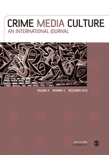
Crime Media Culture
Investigating the Cultural Impact of Crime RepresentationCrime Media Culture is a leading academic journal published by SAGE Publications Ltd, dedicated to exploring the intricate interplay between media representations of crime and societal perceptions. Established in 2005, this journal has become a cornerstone in the fields of Cultural Studies, Law, and Communication, consistently ranking in the top quartiles within relevant categories, including a Q1 ranking in Arts and Humanities (miscellaneous) and Cultural Studies for 2023. The journal offers a platform for interdisciplinary research that addresses the critical implications of media narratives surrounding crime, appealing to researchers, professionals, and students alike. With a strong focus on contemporary issues, it provides insightful analyses and discussions that contribute to the evolving discourse on crime and its representation in various media forms. Although the journal is not open access, it remains vital for those seeking to understand the broader context of crime through media, making it an essential resource for academics and practitioners in the UK and beyond.

Justice Evaluation Journal
Evaluating justice, shaping reform.Welcome to the Justice Evaluation Journal, a leading publication in the field of law, published by Taylor & Francis Ltd, renowned for its commitment to advancing scholarly discourse. With an ISSN of 2475-1979 and an E-ISSN of 2475-1987, this journal has established itself as a pivotal resource for researchers, practitioners, and students from its inception in 2018 through to its ongoing contributions in 2024. Achieving a prestigious Q1 ranking in the law category, and earning a remarkable 90th percentile rank in Scopus, the journal is dedicated to evaluating and disseminating critical insights on justice systems and reform. Although not an open-access journal, it continues to foster deep scholarly engagement through a rigorous peer-review process. The Justice Evaluation Journal serves as an essential platform for those committed to improving the effectiveness and fairness of legal institutions worldwide, making it indispensable in your academic and professional journey.
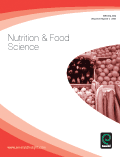
Nutrition & Food Science
Exploring the intersection of diet and technology.Nutrition & Food Science, published by EMERALD GROUP PUBLISHING LTD, is a prominent journal dedicated to advancing the understanding of nutritional science and food technology. With an ISSN of 0034-6659 and an E-ISSN of 1758-6917, this journal has provided a platform for scholarly articles, reviews, and insightful research since its inception in 1971. The journal is recognized in the Q3 quartile for both Food Science and Nutrition and Dietetics categories, showcasing its moderate impact within the field. Currently ranked #202 in Food Science and #81 in Nutrition and Dietetics based on Scopus metrics, it caters to a diverse audience of researchers, practitioners, and students eager to explore the latest findings and developments. While not an open-access journal, it offers various subscription options for individuals and institutions keen on accessing high-quality research. With a commitment to interdisciplinary collaboration and practical applications, Nutrition & Food Science is an essential resource for those invested in improving health outcomes through informed dietary practices and food innovations.
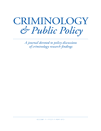
Criminology & Public Policy
Bridging Theory and Practice for a Safer SocietyCriminology & Public Policy, published by Wiley, is an esteemed journal that plays a pivotal role in the interdisciplinary fields of law, public administration, and literature. With a focus on innovation and empirical research, this journal addresses critical issues surrounding crime and justice while influencing policy decisions globally. The journal boasts a prestigious impact factor, reflecting its significant contribution to academic discourse, particularly noted for its top quartile rankings in the fields of Law, Literature and Literary Theory, and Public Administration in 2023. As a resource for researchers, practitioners, and policymakers, Criminology & Public Policy aims to bridge the gap between theory and practical application, presenting cutting-edge analyses and insights that are vital for addressing contemporary societal challenges. By providing a platform for rigorous scholarship, this journal supports the advancement of knowledge and fosters informed discussions that shape effective public policies.

Journal of Experimental Criminology
Pioneering Research in Crime Prevention and JusticeThe Journal of Experimental Criminology, published by Springer, stands as a beacon of innovation within the realm of criminology and legal studies. With an ISSN of 1573-3750 and E-ISSN 1572-8315, this esteemed journal, based in the Netherlands, explores groundbreaking research and experimental approaches to understanding criminal behavior and justice systems. It proudly resides in the elite Q1 quartile of the law category for 2023, ranking an impressive #37 out of 1025 in Scopus within the Social Sciences _ Law domains, placing it in the 96th percentile among its peers. The journal's objectives are aimed at disseminating high-quality empirical research that informs policy and practice, making it an essential resource for scholars, practitioners, and students who strive to enhance the efficacy of crime prevention and criminal justice interventions. With coverage spanning from 2005 to 2024, the Journal of Experimental Criminology invites contributors from diverse backgrounds to engage in the interdisciplinary dialogue that shapes the future of criminological research.
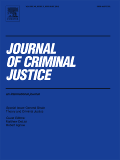
JOURNAL OF CRIMINAL JUSTICE
Transforming knowledge into practice in criminal justice.The JOURNAL OF CRIMINAL JUSTICE, published by Elsevier, stands at the forefront of interdisciplinary research at the nexus of law, psychology, and sociology. With an impressive impact factor and consistently ranking in the Q1 category across multiple disciplines, including Applied Psychology and Law, this journal serves as a vital platform for exploring critical issues in criminal justice policy, behavior, and system effectiveness. Since its inception in 1973, the journal has evolved its scope to encompass contemporary challenges and innovative responses within the field. Researchers, professionals, and students can benefit from access to high-quality, peer-reviewed articles that not only reflect current trends but also drive future discourse. Though currently not open access, the journal's rigorous standards ensure that all published works contribute significantly to advancing knowledge and practice in criminal justice and related areas.